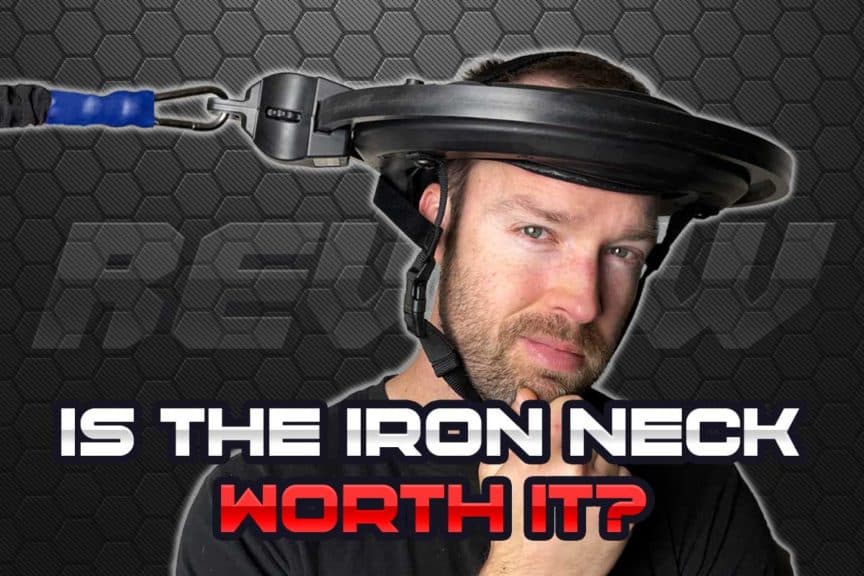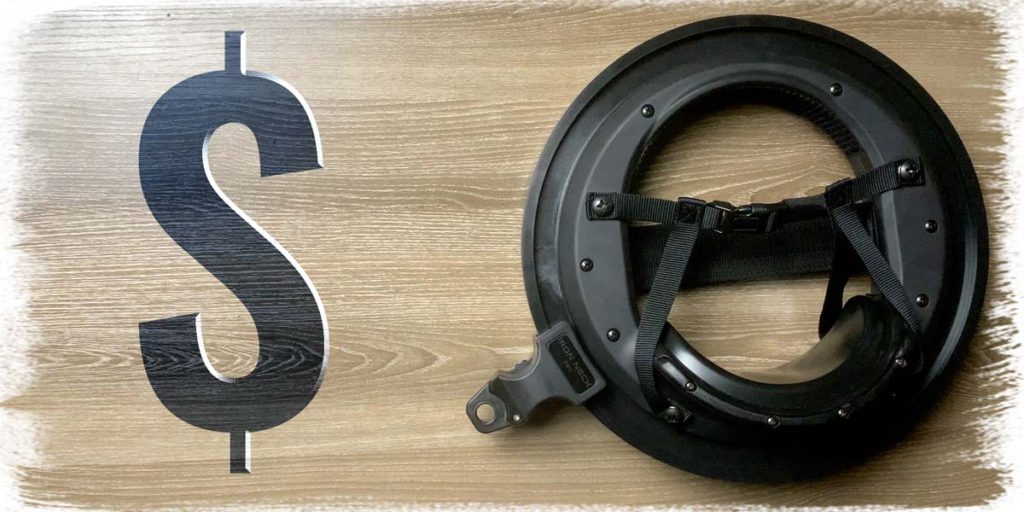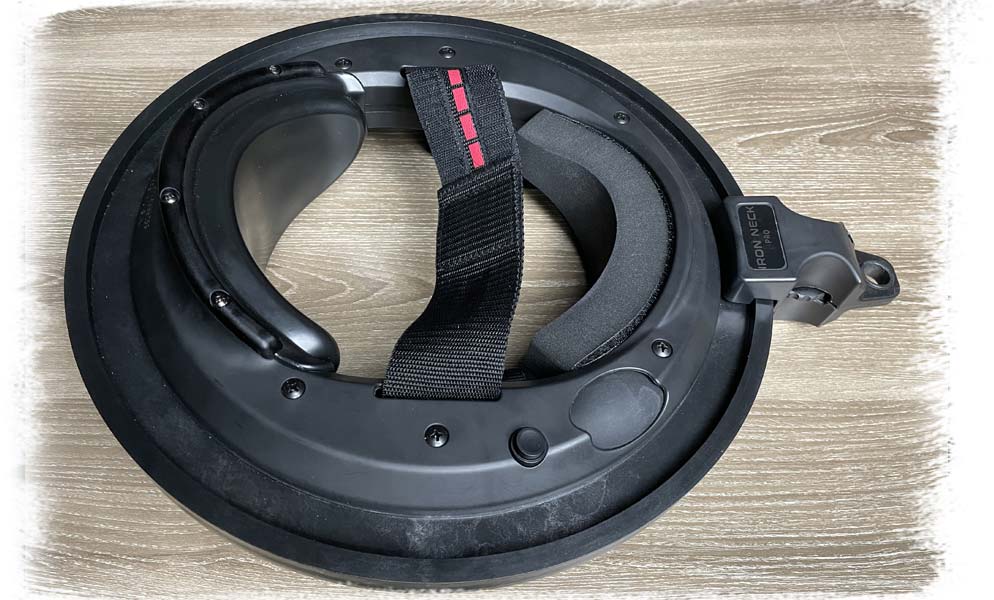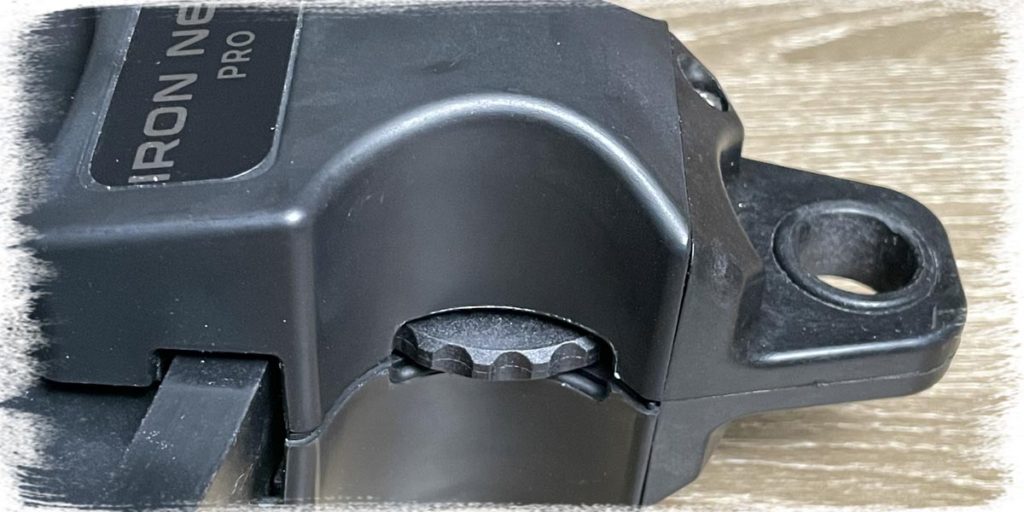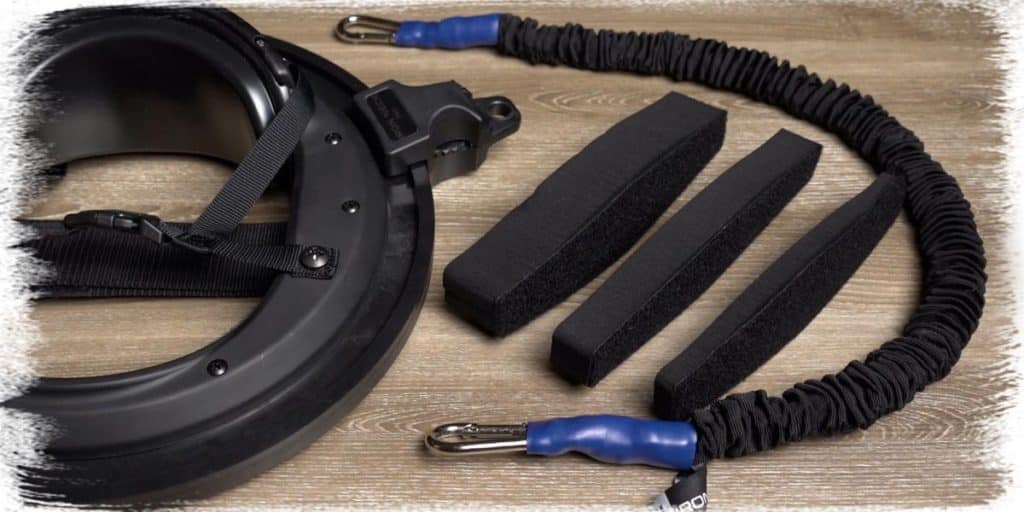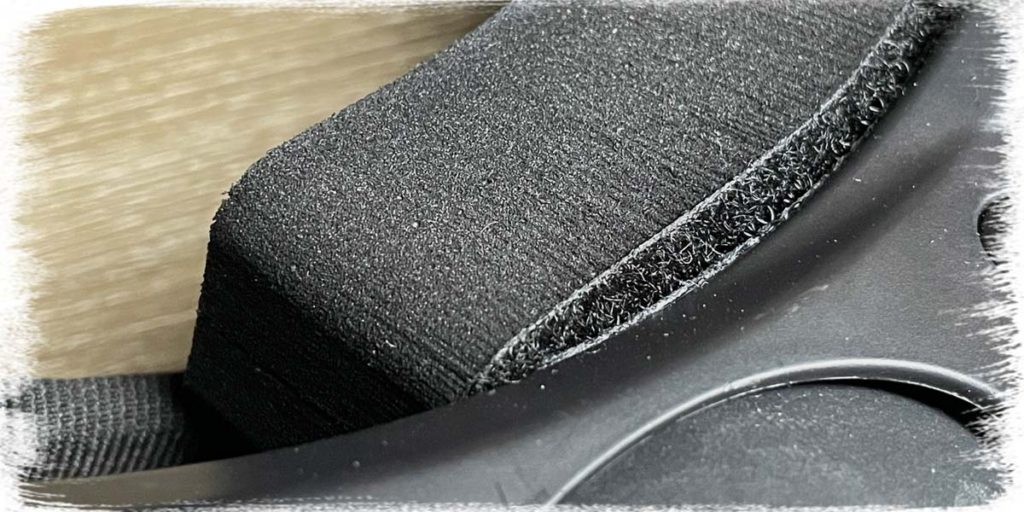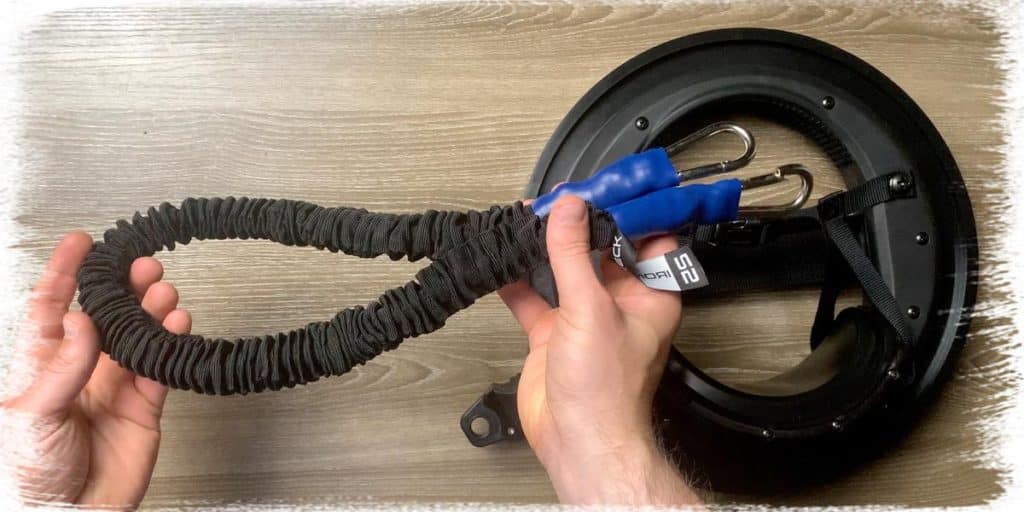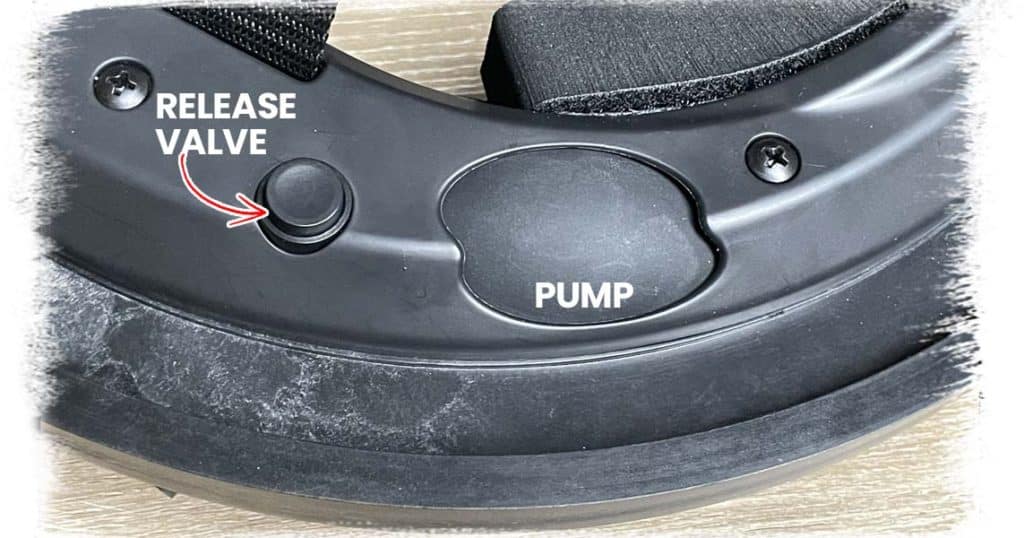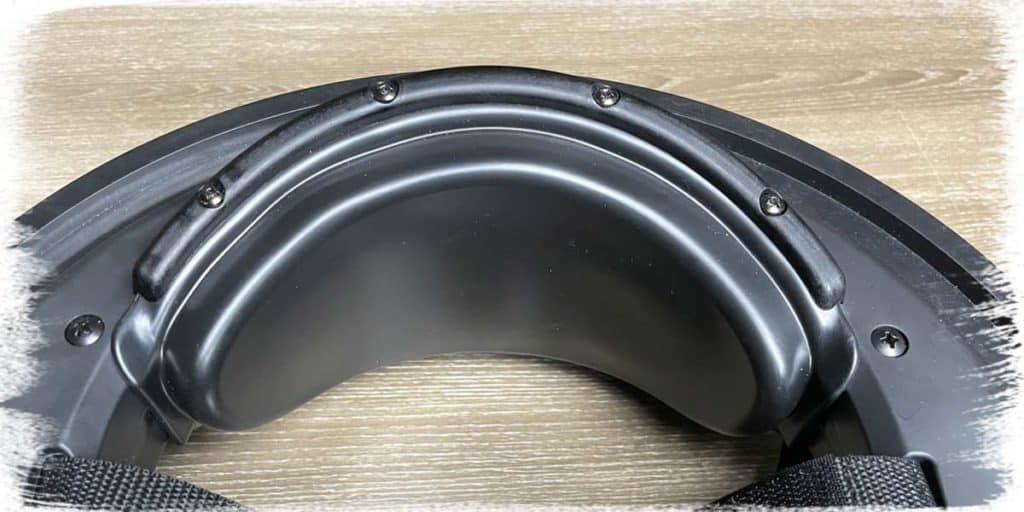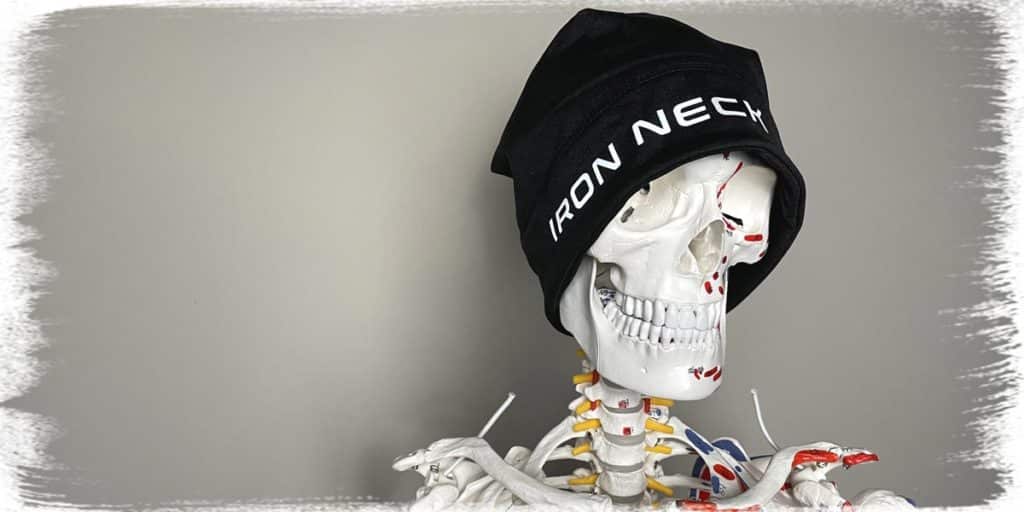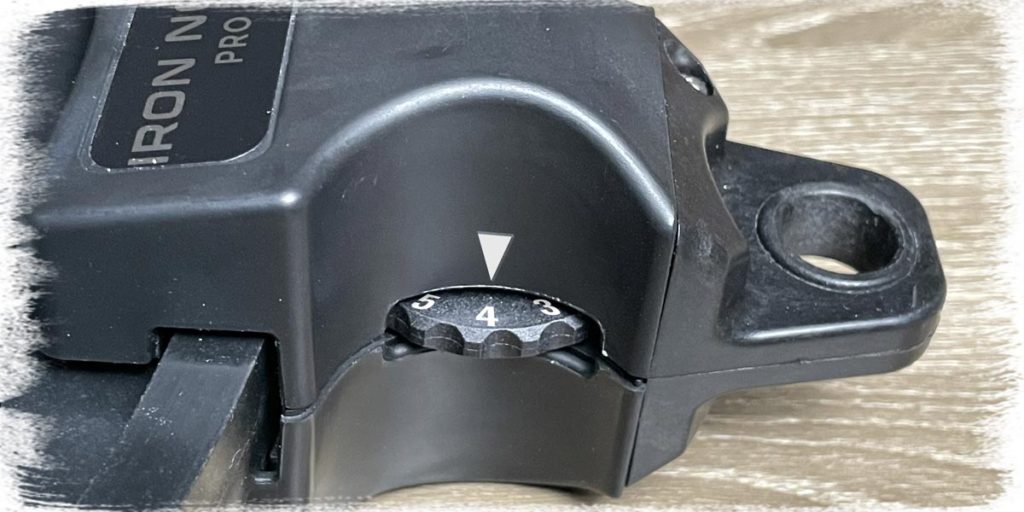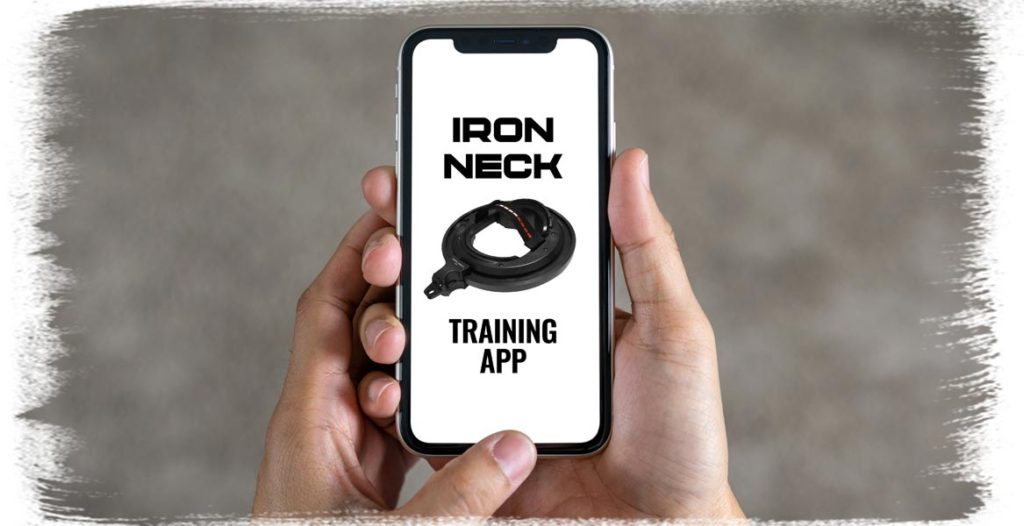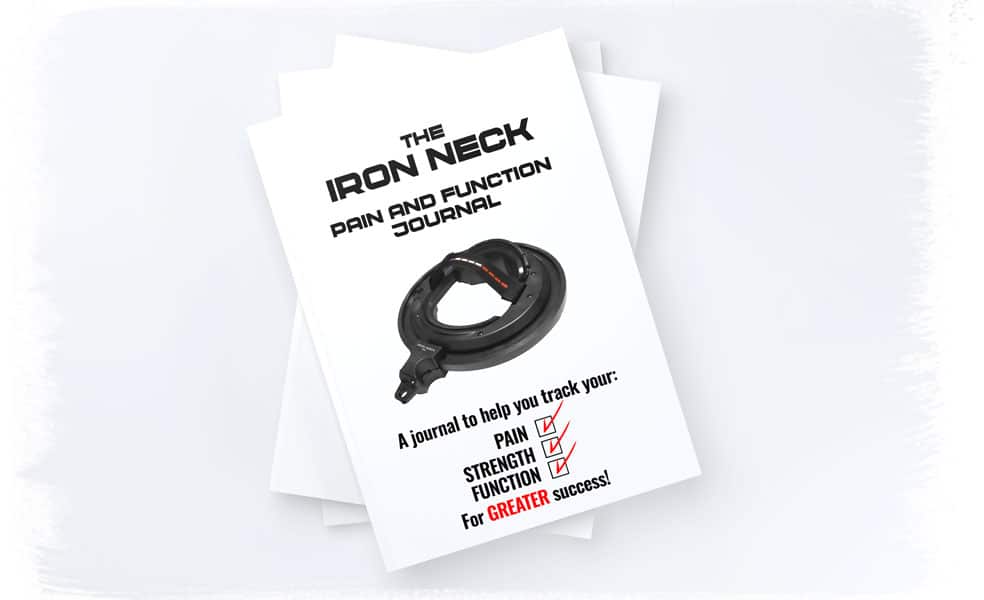As a Doctor of Physical Therapy (DPT) and Certified Strength & Conditioning Specialist (CSCS), getting the injured healthy and preventing injury in the non-injured is more than a job for me — it’s an absolute passion. I walk this particular road in life because the body fascinates me to no end. The only thing cooler than that is that I get to help others get out of pain and get stronger.
And when it comes to getting my patients out of pain, if there’s a tool or device that I believe can help them, I do my best to get my hands on it. One of those tools recently has been the Iron Neck Pro, by the folks over at Iron Neck.
The Iron Neck is a promising device that provides versatile treatment to those looking to reduce pain and dysfunction from certain cervical conditions. It is solidly constructed, easy to fit and use, comfortable and able to help improve neck strength and mobility.
If you’re curious to get a clinician’s perspective on using this device, then keep on reading, as this article will be going into detail with my thoughts and experiences with using this device on myself and the patients whom I treat!
Update: I have a review article on the new third-generation model (the Iron Neck Pro 3.0), which you can check out if you’d like to learn the differences between this new version and the second-generation model reviewed here in this article you’re currently reading!
ARTICLE OVERVIEW (QUICK LINKS)
Click/tap on ANY of the following main headlines to instantly jump to that section of the article! Note: there are subsections within each of these main sections.
• Packaging
• Cost: What you need to know
• Build quality
• Comfort & fit
• Suggestions for the Iron Neck Team
Disclosure statement: Iron Neck sent me their Iron Neck Pro at no charge after I contacted them, requesting the opportunity to review their product. I have not been compensated through any monetary means, and all opinions in this article are my own. I am here to serve those in pain and who have a genuine interest in living stronger, healthier lives. What follows is an honest review that I genuinely hope will help you to decide whether purchasing an Iron Neck is a wise financial decision for you or not. I do have an affiliation with them now (after being so thrilled with the results), but I accepted this affiliation only after this review was posted.
If you would like to purchase any Iron Neck Products and support my website in the process, please consider using this link that takes you to the Iron Neck website. I will earn a small commission at no extra cost to you. I use these commissions to offset the costs of running this website and to continually enhance the quality of content I can provide.
Packaging
Let’s start right at the beginning with the shipping and packaging of the unit that the folks at Iron Neck sent to me.
This is a relatively short section, as there’s nothing much to say here — the packaging of the Iron Neck was very well done, which is what should be expected for a device at its respective price point. The unit was snugly and securely in place within its box, surrounded by high-quality foam on all four sides. It would have taken a serious, serious amount of mishandling (like, running it over with a truck or something) by any delivery service to cause any damage to the Iron Neck in the box.
Based on my experience, you shouldn’t have to worry about lousy packaging should you decide to purchase any of the Iron Neck models.
Cost: What you need to know
I want to be respectful of your time, so we’re going to start off with what many consider to be the elephant in the room: the cost barrier of the Iron Neck.
If you want an entire article dedicated to common reasons as to why the Iron Neck may be an appropriate purchase to make, be sure to check out my article: Compelling Reasons: Why Buying the Iron Neck is Worth Your Money. The article covers five factors that often make the Iron Neck a solid investment to make.
There are many other important factors regarding the Iron Neck to consider that are covered within this article (trust me, read the whole post). However, I know that the cost tends to be the biggest one, and I don’t believe in making you wait until the end of the article to address it.
If there’s one hesitation that most individuals on the internet seem to have, it’s the cost to purchase. Each of the three Iron Neck models comes in at different price points, and each can be a barrier for specific individuals.
While I didn’t pay for the unit that I’m reviewing, I know what it’s like to contemplate spending hard-earned money on novel equipment. (In PT school, as a poor, broke grad student, I went back and forth for about a month on whether or not I should purchase the ~$500 (USD) blood flow restriction system that I use for myself and now my patients in the clinic.)
Current prices at the time of publishing this article:
- Iron Neck Starter model: $299
- Iron Neck Varsity model: $399
- Iron Neck Pro model: $599
I have no way of knowing, but I would imagine that one of the pain points that the Iron Neck team has is dealing with questions along the line of “why does it cost so much for a simple piece of equipment?”
Now, keep in mind that I’m a physical therapist and strength & conditioning specialist. I have no idea the costs and other expenses that go into designing a product, researching it, marketing it, etc. I’m leaving that to the folks at Iron Neck. I’m not going to talk about what I don’t know and am not an expert with.
But, with the expertise that I DO have, I will talk about the benefit that it does have from rehabilitative and prehabilitative (injury prevention) standpoints.
The quick takeaway of this section: There are plenty of benefits to be had by using the Iron Neck. The cost is certainly justifiable when factoring in the long-term benefits that it can afford. I do not consider the Iron Neck to be any sort of a gimmick or non-functional piece of equipment. While there are, of course, many ways to rehabilitate, strengthen & improve the functional capacity of the neck & supporting musculature, the Iron Neck offers some exceptional versatility, especially for those who do not have the financial means to receive regular therapy services from a qualified healthcare professional.
I deal with many patients on my clinical caseload who come to our clinic with grade I and grade II whiplash-associated disorder (WAD). I’ve seen the pain and dysfunction that tends to result. While some tend to improve within a handful of sessions, I have many who take months upon months to get where we need them to be. Often it requires higher levels of intervention, such as steroid injections, platelet-rich plasma (PRP) injections and even radiofrequency nerve ablation of the nerve(s) supplying the sensation to the joint(s).
The cost of all of these therapy sessions and higher-level interventions is in the thousands-of-dollars range (thankfully, much of it — though not all — is covered by insurance in our neck of the woods here in Canada).
If cost is a concern for you, here are some factors to take into account:
- Appropriate strength-based training for your neck can absolutely begin before you purchase the Iron Neck. If you need another few weeks or months, etc., to save up for purchasing an Iron Neck unit, you can start with performing other exercises and movements and incorporate the Iron Neck as part of your regimen later on down the road. The Iron Neck offers some fantastic and exclusive ways to train your neck, but it’s not like you MUST own one before getting a jump on your overall neck strengthening and/or rehab.
- The folks at Iron Neck offer financing options, which may be an appropriate avenue for you to pursue if money is tight yet you’re rather keen on purchasing a unit as soon as possible.
- Iron Neck does seem to have certain discounts that they offer (in addition to the aforementioned financing options). By signing up for their newsletter, you can receive a discount on any purchases and stay up to date for other discounts they may offer throughout the year.
Pro tip: If you have a friend or training partner who may be interested in the Iron Neck unit as well, you can see if they’d like to split the cost. I’ve done this with fellow training partners/colleagues in the past for other forms of equipment we were both interested in, essentially sharing it until one of us decided to buy it outright from the other later on down the road. Perhaps it’s not ideal, but it’s a great way to save money for the time being.
Build quality
The quick takeaway of this section: I have no issues regarding the build quality on the Iron Neck. Everything seems well constructed and put together with precision. The unit that I’ve been using has already seen some high levels of use from numerous patients, and everything is holding up well at this point in time.
Keep in mind that the Iron Neck is made mainly from plastic and that this is not a bad thing in any sort of way.
While consumers tend to equate plastic with a “cheap” or “low-quality” material, it’s essential to realize that much of the Iron Neck is made out of plastic for a reason: plastic not only keeps the cost down on an otherwise already expensive product, but it also keeps the physical weight down, which is quite essential when it comes to the neck.
Necks can be rather delicate if deconditioned (weak), unhealthy or injured. As a result, you don’t want to be wearing an overly and unnecessarily heavy piece of equipment on your head when finding the appropriate parameters for what the neck can tolerate. I often work with patients who have some form of neck injury, so a light piece of equipment is a must; straining a patient’s neck by simply wearing an overly heavy piece of equipment would not bode well for their wellbeing or my professional reputation.
Side note: If you are looking for ways to load your neck, you can try the more traditional neck harness, such as their Alpha harness or their Iron Neck harness which is another product of the Iron Neck company.
Next, let’s have a quick look at the build quality of some of the other features on the Iron Neck Pro unit:
Resistance dial
The hallmark feature of the Iron Neck Pro model over the Iron Neck Starter and Varsity models is the ability to dial in the rotational resistance on the headpiece. This tensioning dial is essential for me to have, as my patients all have varying degrees of overall neck strength and neck health. As a result, some need to have little or no resistance, while others require a fair amount. Plus, as time goes on and their neck health and strength improve, they need to increase the rotational resistance accordingly.
The tensioning knob works just as expected; it allows the headpiece to rotate without a whisper of resistance, clamp down to an immense level of resistance, and everything in between. It’s a pretty sensitive knob, but that’s not a bad thing at all. Small, incremental turns can really take the resistance up rather quickly. Still, I’d rather that than have to turn the dial a ton just to elicit relatively small changes.
My only wish here is that the dial had numerical markings on it, as an objective display would make an immense difference for me as a healthcare professional and my patients. To find out why (and to see a mock-up version that I made that has this feature), keep on reading this article.
Padding & Velcro
Since heads come in various sizes, the Iron Neck has the ability to swap frontal forehead padding to help ensure an optimal fit for its user. The smaller your head, the thicker the pad you’ll likely need. There are three different pads to choose from, all of which are secured by Velcro.
The padding itself feels pretty nice. I have no issues with it, nor have any of my patients at this point in time.
As for the Velcro — I have never come across more sticky/intense Velcro than what is used on the iron neck (this is a good thing). Maybe there has been some sort of serious advancement in Velcro since I’ve last checked, but yeah, the Velcro is top-notch!
If you’re an individual user, this will be a welcome build-quality feature, as you won’t have to worry about the forehead pad going anywhere any time soon. My only reservation comes from the specific application for how I’m using the device in the clinic — constantly switching the forehead padding pieces based on the sizing need of each of my patients. I have to switch the pads quite frequently (multiple times a day), which can wear down the Velcro as time goes on.
Velcro always wears out with enough usage, and while I feel that it will last for quite some time, I always wonder how much switching I can do before it loses its stickiness. Keep in mind, this is for Velcro in general and in no way a knock on the Iron Neck. Velcro is the best material to use here. This is just a universal factor to be aware of for Velcro in general.
Resistance cable
The Iron Neck Pro that was sent to me came with a blue, 25-pound resistance cable. The quality of the cable is on-point, and I have no actual remarks here. It’s built exactly how it needs to be built. Simple as that.
Remember: ALWAYS use a cloth-covered band with this unit and NEVER bare tubing. If the covered tubing snaps, it will be contained within the cloth, eliminating any danger to the band snapping into your eyes or face.
Inflatable air bladder & pump
To ensure the most ideal fit around the head possible, the Iron Neck has an inflatable bladder at the back, which can be pumped up by hand to ensure optimal snugness.
The pump works quite well, and the bladder feels quite comfortable as it inflates. Again, the quality here seems on point, as none of my patients, nor myself, have any complaints about it. The pump and bladder have already been getting high volumes of use due to how much the unit is being used daily within our clinic. So far, there is not a single issue to report.
Comfort & fit
Human heads come in an oddly surprising variety of shapes and sizes. As a result, any time a company designs any sort of product that is meant to be worn securely (yet comfortably) on top of or around someone’s dome, I feel that there’s a decent amount of challenge that must come along for the ride.
Overall, I think Iron Neck has done quite a nice job in selecting materials and components that help optimize the overall comfort and fit of the device when it’s being worn. And doing so is essential, as no one will want to use this piece of equipment if it’s uncomfortable, and it certainly can’t be used (either at all or optimally) if the fit isn’t just right.
My personal comfort
I personally feel that the unit feels great when I wear it. I have no issues with any sort of discomfort, though I suspect that may be from my years of wearing football helmets in high school and college. I use the thinnest forehead pad combined with a bit of air pressure in the rear bladder, and it makes for a great fit and experience.
What my patients say about comfort
Most of my patients say that overall the Iron Neck is comfortable enough. They tend to generally find that there’s a bit more pressure on the forehead than what they’d like, but that it’s undoubtedly tolerable and within reasonable limits. Remember: the unit needs to be securely on the head enough to not move when performing strengthening exercises with the device.
From this, I’ve begun telling my patients who use it for the first time that while it won’t likely feel as comfortable as slipping on your favourite ball cap, it shouldn’t be overly uncomfortable, either.
The Iron Neck has three primary components that help to optimize the comfort and fit of the device, so let’s briefly look at both of them:
The skull cap
The Iron Neck unit comes with a skull cap, which is essentially a beanie (or toque, as we call them here in Canada) that can be worn if needing a more precise fit than from what can be obtained with just slipping the Iron Neck unit straight on top of one’s head. It can also be used if looking to increase comfort while wearing the device.
It’s made of a nice material, is comfortable and isn’t overly thick, yet thick enough that it may help to optimize snugness or decrease discomfort when wearing the unit if needed. I personally don’t need it for myself, and I don’t have any of my patients wear it, only because patients don’t want to wear a cap that has been worn by other patients (the Iron Neck unit itself is easy enough to clean after each time a patient uses it).
If my patients require a headpiece to help with comfort or snugness, I simply tell them to bring their own.
Full disclosure: Since I don’t need to wear the skull cap to optimize the fit for myself, and I have my patients wear their own (if required), I wear the Iron Neck skull cap as a regular toque/beanie to keep my head warm on cold days here in Canada, haha. Looks pretty good on me!
Suggestions for the Iron Neck Team
Any company that takes pride in what they do will always strive to continually improve and build upon what they’ve already established. Overall, I’m very happy with the Iron Neck. Still, there are some suggestions that I have for improving the device in specific ways.
Make an objective resistance marker on the pro unit
What separates the pro model from the other two models of the Iron Neck is its variable resistance dial. As a physical therapist and a strength and conditioning specialist, this pro model offers the variety I need when it comes to the individuals I treat in the clinic and train in the gym. As such, I need the ability to have no resistance for certain patients, high resistance for some of my non-injured athletes, and variable resistance for everyone else in between.
With my patients, it’s essential that we can objectively measure progress for two particular reasons:
Reason 1: To encourage my patients as they track their progress.
Reason 2: To provide objective data to the insurance companies of certain patients in order to provide proof of progression in the patient’s rehabilitation.
Both of these parties are always happier when progress can be meaningfully tracked and monitored. It takes out the guesswork and adds confidence for both parties in that things are overall moving in the right direction.
Of course, much of the challenge is dictated by the band that the head unit is hooked up to. However, this is easy to track and objectively note, as the bands are not only coloured but also labelled with a specified resistance. Providing the extra level of objective measurement regarding numerically labelled resistance on the headpiece is one “upgrade” that I would strongly advocate for.
If Iron neck were able to incorporate either painting or engraving a ratio scale onto the resistance dial, it could help ensure that individuals know which resistance to use for their next session. As well, it would objectively mark and track their progress. As any healthcare provider will likely tell you, any time guesswork can be taken out of one’s rehabilitation or strength training pursuits, it’s a welcome opportunity to do so.
Build an app exclusively for those who purchase a unit
Building an app would no doubt add an extra expense for the folks over at Iron Neck. Still, it may be one that could help sway many on-the-fence individuals when it comes to purchasing a unit. No doubt, it would add value to those looking to get the most out of their unit and could provide more opportunities for the folks at Iron Neck to provide exclusive content to those who have invested their money into purchasing a unit.
What the app could consist of and be used for is entirely up to the Iron Neck team. However, if I were to be an average joe who is trying to rehabilitate a neck injury or prevent a neck injury from occurring, having an app with dedicated content on rehabilitative and rehabilitative training would be an excellent start. No doubt they could build an extensive library as time goes on, along with programs for specific sports and athletes.
The ability to input variables of one’s workout session into the app, track their workout sessions, etc., could also provide motivation and value to those who use it. Again, I recognize that developing and building an app of this nature is likely a significant undertaking in terms of time and money for any company. However, it may be a great way to provide value-added service to the target population that the folks at Iron Neck are trying to reach.
Include a pain & function journal for those using the unit for rehabilitative means
This is the passionate physical therapist that I am simply bubbling over in this section, and many will likely view this as overkill. But, as someone who wants to do all that he can to eliminate pain and dysfunction in others, providing these individuals ways to feel empowered and take control over their situation is something that I will always advocate for and welcome.
Pain and dysfunction can be scary, disheartening and even exhausting. Science is getting pretty clear these days that by arming these individuals with a sense of knowledge and control, their outcomes can be dramatically improved.1-3
Use the discount code “STRENGTHRESURGENCE” for a 15% discount (on any products) over on the Iron Neck website. I receive a small commission on any purchases made with this code, which I use to offset the costs of running this website.
Taking the time to develop and print (or perhaps it could be part of the Iron Neck app) a pain and function journal for these individuals to use would, again, be an added expense for the Iron Neck team, but one that no doubt could provide excellent value for those looking to purchase a unit. Tracking pain, seeing (and feeling) it decrease, while objectively seeing and feeling functional improvement taking place is a life-giving feeling for those in chronic or high levels of acute pain.
Of course, patients can find and create their own pain journals and track their own functional improvements. Still, Iron Neck has some very talented and educated individuals who could help take out much of the guesswork and optimize the process for those looking to purchase one of their units.
Do I consider making a pain and/or function journal absolutely necessary? Perhaps not, but I feel it would be an excellent addition for the Iron Neck team to consider when shipping out their Iron Neck Starter or Iron Neck Pro model.
Continue with research
I’ve been in talks with the folks at Iron Neck, and it’s been exciting to hear that they’re continually involved with research studies involving the efficacy of the Iron Neck. As a healthcare professional, any time a therapeutic device or instrument has validated research behind it can make life a lot easier for my fellow colleagues and me.
While an appropriately-designed product doesn’t necessarily have to have research behind it in order for it to be useful or effective, validated research goes a long way in evidence-based professions such as mine. It can help with a patient’s confidence and can also be the deciding factor with insurance companies as to whether or not they will approve a patient for treatment using the device, bit it exclusively or in part with other treatment adjuncts.
As the folks at Iron Neck continue on with pursuing research, I want them to know that I applaud them and that I hope they continue on, as there is never such thing as “too much evidence” for a device of any kind when it comes to the world of healthcare.
Final thoughts
At the end of the day, the Iron Neck has become a highly appreciated device and enjoyed by myself, my colleagues within our clinic, and most importantly, my patients. It has been making a profound difference in many of the patients on my caseload whom I treat for various extents of cervical dysfunction (most following a motor vehicle accident).
No single tool is appropriate for every individual, but the right tool used for the right job can really be a game-changer. And when it comes to the Iron Neck, this particular tool is serving many of our patients extremely well.
So, in closing, the Iron Neck is a device that has my colleagues and I all wondering how we existed without it; we have pretty good treatment outcomes with our cervical rehabilitation approach as is, and we now have one more tool in our arsenal when it comes to helping our patients.
I’m pretty thrilled with this device, and I’m excited to see what it will continue to do for my patients and myself as time presses on.
References:
1. Quartana PJ, Campbell CM, Edwards RR. Pain catastrophizing: a critical review. Expert Rev Neurother. 2009;9(5):745-758.
2. Louw A, Zimney K, Puentedura EJ, Diener I. The efficacy of pain neuroscience education on musculoskeletal pain: a systematic review of the literature. Physiother Theory Pract. 2016;32(5):332-355.
3. Louw A, Puentedura EJ, Zimney K, Schmidt S. Know pain, know gain? A perspective on pain neuroscience education in physical therapy. J Orthop Sports Phys Ther. 2016;46(3):131-134.

Hi! I’m Jim Wittstrom, PT, DPT, CSCS, Pn1.
I am a physical therapist who is passionate about all things pertaining to strength & conditioning, human movement, injury prevention and rehabilitation. I created StrengthResurgence.com in order to help others become stronger and healthier. I also love helping aspiring students and therapists fulfill their dreams of becoming successful in school and within their clinical PT practice. Thanks for checking out my site!

